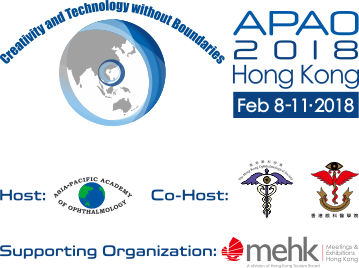The Scientific Program for the 33rd APAO Congress has now been finalized. Here’s a look at a few of this year’s unique sessions.
Featuring speeches and presentations by leaders in ophthalmology from APAO and beyond, the Nakajima Memorial Symposium will honor the memory of APAO’s former President and longest-serving Secretary-General Prof. Akira Nakajima of Japan. Find out more about Prof. Nakajima’s life and work here.
New this year, the Scientific Program at APAO 2018 will feature an interactive panel discussion among leading experts in the glaucoma and retina subspecialties. TheInterdisciplinary Discussion: Glaucoma and Retinal Diseases symposium will be chaired by Dr. Suber Huang of the United States, charter member of the Retina Hall of Fame, and Prof. Xiulan Zhang of China, who was listed as one of the 100 most influential people in ophthalmology in 2014.
Back by popular demand, the Ophthalmic Premier League video symposium will feature four teams (Accommodators, Multifocal, Divide and Conquer, Capsular Bag), who will present their challenging and complicated cataract cases as they compete for glory. Don’t miss this line-up featuring experts from the Asia-Pacific and around the world.
















 The primary role of the
The primary role of the 


 A total of 5 new APAO member societies will be sending official representatives to the APAO Congress for the first time at APAO 2018 in Hong Kong. In this issue, we feature the Myanmar Ophthalmological Society (MOS), one of APAO’s new National Member Societies.
A total of 5 new APAO member societies will be sending official representatives to the APAO Congress for the first time at APAO 2018 in Hong Kong. In this issue, we feature the Myanmar Ophthalmological Society (MOS), one of APAO’s new National Member Societies.
